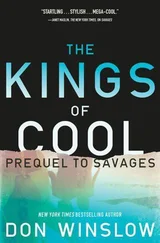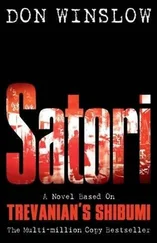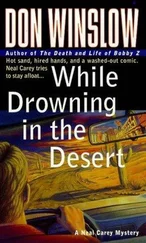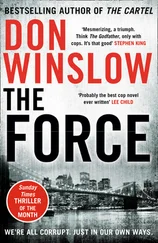Don Winslow - California Fire And Life
Здесь есть возможность читать онлайн «Don Winslow - California Fire And Life» весь текст электронной книги совершенно бесплатно (целиком полную версию без сокращений). В некоторых случаях можно слушать аудио, скачать через торрент в формате fb2 и присутствует краткое содержание. Жанр: Триллер, на английском языке. Описание произведения, (предисловие) а так же отзывы посетителей доступны на портале библиотеки ЛибКат.
- Название:California Fire And Life
- Автор:
- Жанр:
- Год:неизвестен
- ISBN:нет данных
- Рейтинг книги:4 / 5. Голосов: 1
-
Избранное:Добавить в избранное
- Отзывы:
-
Ваша оценка:
- 80
- 1
- 2
- 3
- 4
- 5
California Fire And Life: краткое содержание, описание и аннотация
Предлагаем к чтению аннотацию, описание, краткое содержание или предисловие (зависит от того, что написал сам автор книги «California Fire And Life»). Если вы не нашли необходимую информацию о книге — напишите в комментариях, мы постараемся отыскать её.
California Fire And Life — читать онлайн бесплатно полную книгу (весь текст) целиком
Ниже представлен текст книги, разбитый по страницам. Система сохранения места последней прочитанной страницы, позволяет с удобством читать онлайн бесплатно книгу «California Fire And Life», без необходимости каждый раз заново искать на чём Вы остановились. Поставьте закладку, и сможете в любой момент перейти на страницу, на которой закончили чтение.
Интервал:
Закладка:
The heavy char tells Jack something else he isn't going to speak into the tape. Usually heavy char means a hot, fast fire, simply because it shows that fire had the chance to burn a lot of stuff — fast — before the Fire Department could get there and put it out.
So the next thing he looks at is the char pattern.
If fire has a language, then the char pattern is its grammar, its sentence structure, its subject-verb-object. And the sentences this pattern is banging out are like Kerouac on speed, because it's like verb-verb-verb, it's talking about a fire that was moving, man, not stopping for periods or commas or nothing.
Jack's thinking that this fire was rolling. Because Jack's looking at what's known in the business as "alligator" char. It looks like what it sounds like, the skin of an alligator. What happens is that a hot fire moves fast. It burns quickly and moves on, so it leaves sharp lines of demarcation between what it burns and what it doesn't. Turns out looking like alligator skin.
The hotter the fire, the faster it burns, the bigger the alligator you got.
Jack's looking at one big alligator here.
He scans the charred remains of what had been the expensive white-and-gold wallpaper, which is going to cost a bundle to replace, and he questions whether this wallpaper, pricey as it was, was sufficient fuel to feed this hungry an alligator.
He doesn't say that into the tape recorder, though. He keeps those thoughts to himself. What he says into the recorder is, "Moving along the west wall of the bedroom, I observe large, alligator-type char."
Observing it's one thing, recording it's another, because the room is black, and black photographs like nothing. So Jack hauls out his portable flash unit and starts "painting" the room with the light.
He stands in one corner and looks through the camera viewfinder as he moves the light out from one wall toward the center of the room. He observes where the light fades so he knows where he'll need to start for the next shot. He snaps his shots — color and black-and-white — and then moves the flash in toward the center of the room. Then he moves to another corner and repeats the process and so on and so forth until he has the room covered. He jots down a note for every shot he takes and speaks what he's doing into the tape recorder.
Then he draws a rough sketch of the room and notes where he was standing for each shot and what part of the room the shot covered. So when the smart-ass lawyer asks him, "You don't really know that you were standing in the southwest corner when you took this photograph, do you?" Jack can whip out the notebook and say, "Actually I do, counselor, because it's my practice to make notes of my location when…"
Because the point is, Jack thinks, that you have to do it every time. Take your time, do it right, go on to the next task.
So the next thing he does is measures.
Gets out a steel tape and measures the dimensions of the room and notes certain "landmarks" from which he can triangulate. He has a number of marks to do it from, because the big furniture in the room left heat shadows.
Pale marks on the wall — reverse silhouettes, if you will — where the heavy furniture shielded the wall from the initial flashover. So he uses two of the heat shadows as triangulation points and moves on, goes back to listening to the fire.
What else does the fire have to say?
The char on the rafters.
Same thing, alligator char on the wood, sharp lines of demarcation between the bottom edge of the rafters, which is heavily charred, and the top edge, which isn't.
Nothing unusual there, Jack thinks. Fire burns up, so you'd expect to see the bottom edges of the rafters more heavily charred than the top. And you'd expect to see the heaviest char directly above the bed, where the fire burned the longest. What you wouldn't necessarily expect is what Jack's seeing, and that is that there are several areas of the rafters that are showing heavier char than others. One over by the opposite wall, one by the closet, another by the door that leads into the bathroom.
"Note heavy char on rafters above bed," Jack says. "Sharp lines of demarcation. Note also, heavier char on rafters near closet and near entrance to bathroom."
Jack takes out a steel ruler and jams it into the middle of a char blister on the rafter above the bed.
"Char is one and three-eighths inches deep on rafter above bed," he says, and then does the same for the other two areas. "One and three-eighths on area near closet. One and three-eighths on area by entrance to bathroom."
Then he measures two points in the rafters that look less heavily charred. The char is an inch deep.
Which is interesting, Jack thinks, because there can't be three places where the fire burned the longest. Not accidentally. Of course, there could be other explanations. Depends on what was sitting under those charred rafters. Maybe there was something really tasty for the alligator, something that burned hot and deep and long. That could explain the apparent anomaly.
Then again, the dog was out in the yard when it wasn't supposed to be. And the flames were the wrong color, and the smoke was the wrong color.
That, combined with three hot spots on the rafters, is starting to get Jack pissed off.
Jack knows what Bentley did. Bentley looked at the hole in the roof above the bed, looked at the heavy char on the rafters above the bed, dug the ashes from around the bed and saw that the fire had burned into the floor. Saw the broken vodka bottle and the burned mattress and the twisted bed-springs and figured he had his point of origin.
Because there should be only one point of origin and smoking in bed is the number-one cause of fatal bedroom fires.
Which is good as far as it goes, Jack thinks, but it doesn't go far enough.
So Jack goes looking for V-patterns.
42
Fire burns up and out.
Like a V
It ignites at the base of the V and flames up — because fire burns up, where the oxygen is — and out, as the atmosphere in the room tries to equalize the heat and pressure.
It burns up and out from its point of origin and often it leaves a V-pattern mark. In which case the fire points to where it started.
Now, when a fire starts in the middle of the room, you're not going to see a V-pattern, because there's no surface for the fire to mark. When a fire starts away from a wall, what you'd expect to see instead of a V-pattern is a circular pattern on the ceiling above the point of origin.
Which there certainly is. Above the bed there's not only a circular burn pattern, there's a freaking hole blown through the roof. But there's also ankle-deep ash and deeper char on several places on the rafters and there's a hole in the roof and there's a dog barking outside.
Jack starts in what used to be the closet.
The closet is a walk-in.
Or a hike-in, because this closet is maybe a little smaller than Delaware.
And calf-deep in ash, which Jack would expect because there's a lot of stuff in closets. That's the purpose of a closet, right? To put stuff in it, and because this is a humongous walk-in closet belonging to rich people you're going to expect that the alligator had a banquet in here.
Especially if you have clothes hanging from a pole, because fabrics are tasty to eat and you also have a lot of nice oxygen underneath them. And you're going to have a lot of ash because you're going to have a lot of "fall down." Fall down is just what it sounds like; it's stuff that burns and then falls down onto the floor.
Again, the basic principle of fire is that it burns up. It burns up, seeking oxygen and fuel. Insufficient oxygen, the fire smothers. Insufficient fuel, the fire burns out. The situation a fire really likes is when it can burn upward and find fuel there. Fuel like clothing. Fuel like boxes stored on shelves, and then the shelves themselves.
Читать дальшеИнтервал:
Закладка:
Похожие книги на «California Fire And Life»
Представляем Вашему вниманию похожие книги на «California Fire And Life» списком для выбора. Мы отобрали схожую по названию и смыслу литературу в надежде предоставить читателям больше вариантов отыскать новые, интересные, ещё непрочитанные произведения.
Обсуждение, отзывы о книге «California Fire And Life» и просто собственные мнения читателей. Оставьте ваши комментарии, напишите, что Вы думаете о произведении, его смысле или главных героях. Укажите что конкретно понравилось, а что нет, и почему Вы так считаете.












